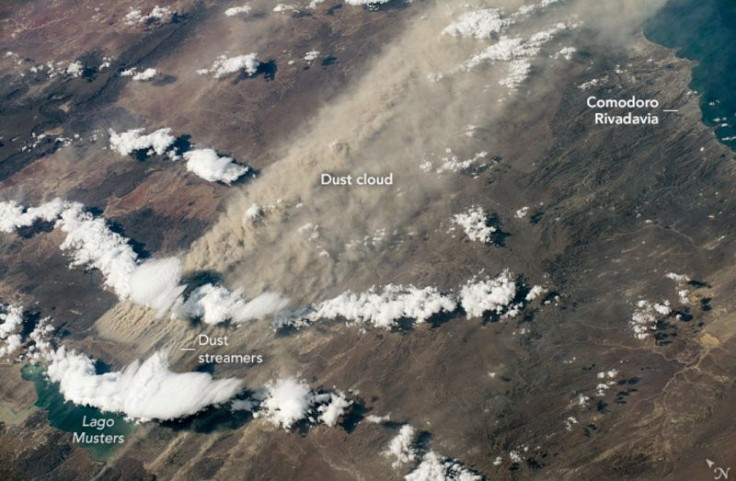Astronaut Snaps Photo Of Patagonian Dust Storm From ISS
KEY POINTS
- An ISS astronaut captured an image of a Patagonian dust storm from the space station
- The image was captured as the ISS was passing over South America
- The storm's surface dust features can also be observed on Martian dust storms
An astronaut aboard the International Space Station (ISS) captured a photo of a dust storm in Patagonia. The image shows a feature that can also be seen in Martian dust storms.
On March 7, 2020, when the ISS was passing over South America, an Expedition 62 astronaut aboard the station snapped a photo of a Patagonian dust storm and its trailing dust cloud. In the image, the shallow lake Lago Colhué Huapí can no longer be seen because it is almost completely covered in dust. However, one can see the area where the dust is being lifted from the ground, as the dust streamers move in the direction the wind is blowing.
According to NASA Earth Observatory, the dust storm primarily originated from Lago Colhué Huapí, which sits beside the deeper Lago Musters. During the Patagonian dry season, Lago Colhué Huapí's water levels drop, exposing loose silt the wind can pick up and carry.

The storm carried dust over 120 kilometers (80 miles) east, eventually reaching the Atlantic Ocean.
Earth and Martian dust storms
Such dust storms typically occur when strong winds lift sand and dust from dry soil. They are common in arid and semi-arid regions on Earth such as the desert regions in the United States, the Middle East and Africa.
On Mars, which is known for its dust storms, the process is essentially the same in that they occur when the Martian winds pick up particles from the surface. Martian dust storms are quite common, especially during summer and spring, and they can also produce dust streamers just like the one observed in the Patagonian dust storm.
Often, Martian dust storms just affect a local area, but there are instances wherein a dust storm can cover the entire Red Planet for weeks. Such was the case of the 2018 global dust event on Mars that eventually caused the demise of the Opportunity Rover after over a decade of exploration on the planet.
According to Scott D. Guzewich of NASA's Goddard Space Flight Center, if the 2018 Martian dust storm happened on Earth, it would cover the area of North America and Russia combined.
© Copyright IBTimes 2024. All rights reserved.






















